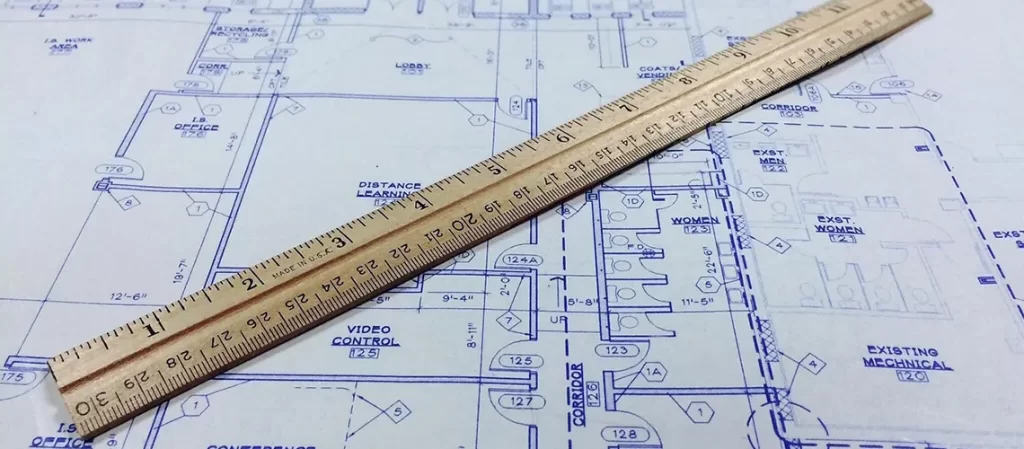up-to-date property valuation trends, insights, and advice tailored for Australian homeowners
Welcome to Tuckeroo
Your Premier Source for Property Valuation News & Advice
Sign up for our newsletter
Valuation Advice

How Does a Retrospective Property Valuation Help in Adelaide
Property values aren’t just important in the present — sometimes you need to know what your property was worth in the past. For Adelaide homeowners, investors, and businesses, a Retrospective Property Valuation provides an independent assessment of a property’s value at a specific historical date.
These reports are often crucial for taxation, legal, and financial purposes, giving clients clarity and compliance in situations where past value is just as important as current worth.
Why Retrospective Valuations Are Needed
Capital Gains Tax (CGT)
When selling an investment property, the Australian Taxation Office (ATO) may require proof of the property’s value at the time it was acquired. A retrospective valuation provides this evidence, ensuring accurate CGT calculations.
Family Law and Estate Settlements
In divorce proceedings or inheritance cases, establishing a property’s historical value is often necessary to divide assets fairly. Retrospective valuations provide legally defensible reports for these situations.
Business and Financial Reporting
Companies may need retrospective valuations for auditing, financial reviews, or compliance with reporting standards.
Benefits of Retrospective Valuations in Adelaide
- Legal Compliance: Accepted by courts and government authorities as credible evidence
- Financial Clarity: Provides accurate figures for tax, estate, or business reporting
- Fair Dispute Resolution: Reduces disagreements by providing an impartial, professional opinion
- Peace of Mind: Ensures decisions are backed by reliable historical data
How Valuers Determine Past Property Value
Professional valuers in Adelaide use a combination of methods, including:
- Historical Sales Data: Comparing past sales of similar properties
- Market Conditions at the Time: Factoring in demand, supply, and economic influences
- Property Records: Reviewing size, improvements, and zoning details as they were
This thorough process ensures retrospective valuations are accurate, independent, and defensible.
Who Benefits Most from Retrospective Valuations?
- Property investors calculating tax obligations
- Families involved in probate or divorce settlements
- Businesses requiring accurate past reporting
- Accountants and financial planners assisting clients with compliance
Conclusion
In Adelaide, retrospective property valuations play a vital role in tax, legal, and financial matters. By engaging professional Retrospective Property Valuation services, homeowners and businesses can ensure accurate historical assessments that stand up to scrutiny.
Whether you’re dealing with capital gains tax, inheritance, or financial reporting, retrospective valuations provide the clarity and compliance needed to move forward with confidence.

How Does a Property Valuation Work?
When it comes to understanding the worth of your property, a professional valuation is essential. Whether you’re buying, selling, refinancing, or managing assets, knowing how a property valuation works can provide you with the insights needed to make informed decisions. This article will explain the process of property valuation and highlight the importance of professional valuation services.
What is Property Valuation?
Property valuation is the process of determining the current market value of a property. This involves a thorough assessment of various factors, including the property’s location, condition, size, and market conditions. The result is a detailed report that provides an accurate estimate of the property’s worth.
Steps Involved in a Property Valuation
1. Initial Consultation
The process begins with an initial consultation where the valuer gathers basic information about the property. This may include the property’s address, type, and any specific features or improvements.
2. On-Site Inspection
A crucial step in the valuation process is the on-site inspection. During this visit, the valuer will:
- Measure the property’s dimensions and overall size.
- Assess the condition of the property, including the structure, fixtures, and any renovations.
- Take note of unique features or improvements that could impact the value.
3. Market Analysis
The valuer will conduct a detailed market analysis, comparing the property with similar properties that have recently sold in the area. This helps in understanding how the property stands in the current market.
4. Consideration of External Factors
External factors such as the property’s location, accessibility, proximity to amenities, and neighbourhood trends are also considered. These can significantly influence the property’s value.
5. Valuation Report
After the inspection and analysis, the valuer compiles a comprehensive valuation report. This report includes:
- A detailed description of the property.
- An analysis of the local market conditions.
- Comparisons with similar properties.
- The final assessed value of the property.
Why is Professional House Valuation Important?
Professional house valuation is crucial for several reasons. It provides an accurate and unbiased estimate of your property’s worth, which is essential for making informed financial decisions. Whether you’re selling your home, refinancing your mortgage, or planning your estate, an accurate valuation ensures that you receive fair value for your property.
Benefits of Using Professional Valuation Services
- Expert Insight: Professional valuers have the expertise and experience to provide accurate valuations.
- Detailed Reports: Receive comprehensive reports that consider all factors affecting your property’s value.
- Market Knowledge: Benefit from the valuer’s knowledge of local market trends and conditions.
- Informed Decisions: Make confident decisions based on reliable and detailed valuation reports.
For house valuation Perth, it is crucial to rely on local experts who understand the nuances of the Perth real estate market. Their insights and detailed reports can help you make better financial decisions, whether you’re buying, selling, or refinancing.
Conclusion
Understanding how a property valuation works is vital for anyone involved in property transactions. While it may be tempting to rely on online estimates, a professional valuation provides a more accurate and comprehensive assessment. If you’re looking to determine the value of your property, contact our specialists in house valuation. Our expert valuers will provide you with a detailed and reliable valuation report, ensuring you have the information needed to make the best decisions for your property.

Timing the Property Market: Valuation Insights to Investment Decisions
Investing in property remains a cornerstone of wealth generation, with the timing of purchase being paramount to maximising returns. Understanding and monitoring property value trends allows investors to make informed decisions, capitalising on market fluctuations for optimal investment outcomes. This article delves into how valuation data can be leveraged for timing investment purchases, with a focus on Australian markets.
Understanding Property Value Trends
Property value trends are indicative of the real estate market’s health and trajectory. These trends are influenced by various factors including economic conditions, interest rates, and supply-demand dynamics. For investors, keeping a pulse on these trends is crucial for identifying the right time to enter or exit the market.
The Role of Valuation Data
Valuation data provides a snapshot of a property’s worth at any given time, reflecting its potential as an investment. This data is gathered through comprehensive analyses of recent sales, property features, and market conditions. It serves as a fundamental tool for investors aiming to understand current trends and anticipate future movements.
Strategies for Monitoring and Analysing Trends
Effective monitoring of property trends involves a multi-faceted approach, combining traditional research with the latest technological tools. Here are strategies to stay ahead:
- Utilising Property Valuation Tools: Numerous online platforms offer real-time insights into property values and market trends. These tools can track changes in property values, providing investors with up-to-date information.
- Engaging a Property Investment Advisor: Professional advisors offer expert analysis and personalised advice based on extensive market knowledge. They can guide investors through the nuances of timing the market.
- Following Market Reports and News: Keeping informed through real estate reports and news articles helps investors understand broader market movements and economic factors influencing property values.
Timing the Market: When to Make Your Move
Timing the market is the strategic decision of when to buy or sell investment property to maximise returns. This requires not only understanding current market conditions but also anticipating future trends.
Indicators of Market Fluctuations
Investors should monitor several key indicators to identify opportune times for investment:
- Price Trends: Increases or decreases in median property prices can signal market shifts.
- Volume of Sales: A higher number of transactions might indicate a seller’s market, whereas fewer sales suggest a buyer’s market.
- Interest Rates: Changes in interest rates can affect investment yields, influencing when to buy or sell.
Maximising Investment Returns with Strategic Timing
By closely monitoring property value trends and leveraging valuation data, investors can optimise their investment timing. The goal is to purchase properties at a lower value during buyer’s markets and sell when values peak. This strategy not only enhances potential capital gains but also minimises risks associated with market downturns.
Utilising Investment Property Trends for Informed Decision Making
Investment property trends offer valuable insights into market dynamics, assisting investors in making data-driven decisions. By understanding and utilising these trends, investors can significantly improve their investment outcomes.
- Regularly review valuation data to understand current market conditions.
- Engage with property investment advisors for expert insights.
- Stay informed on market news and reports to anticipate future trends.
Monitoring property value trends and employing strategic timing in investment purchases are crucial for success in the real estate market. By leveraging valuation data and adopting a nuanced approach to market analysis, investors can enhance their decision-making process, ultimately maximising their investment returns in the dynamic Australian real estate landscape.

The Cost Approach in Property Valuation
Understanding the Cost Approach in Property Valuation
The cost approach is a fundamental methodology used in Sydney property valuation, particularly effective for new or unique properties. This approach calculates a property’s value by considering the costs associated with replacing the property with a similar one. It’s an essential tool for property assessors, investors, and developers, particularly in the Australian real estate market.
The Basics of the Cost Approach
At its core, the cost approach to property valuation involves several key steps:
- Estimating the Replacement Cost: This is the cost of constructing a replica of the subject property using current material, labour, and design standards.
- Accounting for Depreciation: This involves subtracting any loss in value from physical deterioration, functional obsolescence, or external factors.
- Adding Land Value: The underlying land value is added to the depreciated cost of the building.
Factors Affecting Replacement Cost
- Material Costs: The price of building materials can significantly impact the replacement cost.
- Labour Costs: Labour expenses, influenced by the local market and wage rates, also play a crucial role.
- Design and Architectural Styles: More complex designs can increase costs.
- Local Building Codes: Compliance with local regulations can affect construction expenses.
Application of the Cost Approach in Different Scenarios
The cost approach is particularly beneficial in certain scenarios:
Unique Properties
For properties with unique features or limited market data, the cost approach offers a reliable valuation method.
Insurance and Taxation
This approach is widely used for insurance purposes to estimate the cost of rebuilding a property. It’s also utilised in taxation for assessing the value of public and specialised properties.
New Developments
For newly constructed properties, the cost approach provides a direct and straightforward valuation method.
Limitations and Challenges of the Cost Approach
Estimating Accurate Replacement Costs
The difficulty in accurately estimating replacement costs can be a significant challenge, especially with fluctuating market prices.
Depreciation Factors
Determining the correct amount of depreciation requires expertise and can significantly impact the valuation.
Market Conditions
The cost approach may not always align with current market trends, especially in rapidly changing markets.
The Role of the Cost Approach in Today’s Property Market
While the cost approach has its limitations, it remains a vital tool in property valuation, especially for unique properties and new developments. Understanding and accurately applying this method is crucial for professionals in the real estate industry.

Keeping Property Valuations Up-to-Date for Taxes
Why Up-to-Date Property Valuations Matter for Taxes
When it comes to property taxes, it’s crucial to have an updated property valuation on hand. An accurate valuation serves multiple purposes, from determining the amount of tax you need to pay to facilitating transactions like property inheritance and sale. This article delves into the importance of keeping your property valuations current for various tax implications.
The Financial Implications of Outdated Valuations
Ignoring valuation maintenance could lead to financial repercussions. When the valuation is outdated, you could end up paying higher or lower property taxes, resulting in either a financial burden or potential legal challenges.
Updated Property Valuation for Capital Gains Tax
Capital gains tax is applicable when you sell a property at a profit. The tax amount is calculated based on the difference between the selling price and the original purchase price. Having an updated property valuation can be instrumental in minimising your capital gains tax liability.
Valuation Methods for Capital Gains
- Market Comparison Method: Compares your property to similar properties sold recently.
- Income Capitalisation Method: Suitable for investment properties, it assesses the property’s ability to generate income.
- Cost Method: Calculates the cost to replace the property, taking into account depreciation.
Importance of Current Valuations for Inheritance
If you inherit a property, the value at the time of inheritance is used to calculate any future capital gains tax should you choose to sell. An updated property valuation is essential for a fair tax calculation.
How to Update Valuations for Inherited Property
- Hire a Professional Valuer: A certified valuer can provide an accurate assessment.
- Use Government Resources: Many government websites offer valuation tools.
- Keep Records: Maintain all valuation-related documentation for tax records.
Property Taxes and Valuation Maintenance
Regular valuation maintenance ensures that you are neither overpaying nor underpaying your property taxes. Local government usually determines the tax rate, and an accurate valuation helps you anticipate your tax obligations.
When to Update Property Valuation
Here are some key times to consider updating your property valuation:
- Market Fluctuations: If the property market sees significant changes.
- Property Renovations: If you make substantial improvements to the property.
- Change in Property Use: For instance, converting a residential property to a commercial one.
By understanding the importance of keeping an updated property valuation, you can better navigate the complexities of property taxation. Whether it’s for capital gains tax, inheritance, or just your annual property taxes, staying current is vital for financial accuracy and peace of mind.

Understanding Property Valuation Reports: Key Components
The valuation report is a vital tool for property owners, investors, and stakeholders in Melbourne and beyond. It provides detailed insights into the property’s current value based on a multitude of factors. Understanding how to interpret these reports can be the difference between making a wise investment decision or not. Here, we’ll dive into the key components of property valuation reports and how to interpret them, especially in the context of property valuations Melbourne.
What is a Property Valuation Report?
A property valuation report is a document that provides an estimation of the worth of a property based on various factors. Professionals who conduct property valuations in Melbourne and other regions utilize a combination of market trends, property conditions, and external influences to deduce the value.
Key Components of a Property Valuation Report
While there might be some variations depending on the agency providing the report, most property valuation reports share similar components:
1. Executive Summary
This section offers a snapshot of the property’s value, including its address, type, and estimated market value.
2. Methodology Used
Details the specific methods used in the valuation process. This might include the comparable sales method, the income method, or the cost method.
3. Property Description
A detailed description of the property including its size, type (e.g., residential, commercial), and features.
4. Market Analysis
A breakdown of current market trends, especially pertinent to those looking at property valuations in Melbourne. It may cover aspects like demand, supply, and property market forecasts.
5. Comparable Sales
A list of similar properties that were recently sold, including their selling prices. This helps in understanding where the property stands in the market.
How to Interpret the Valuation Report
1. Focus on the Methodology
Understanding the methodology used gives you insight into how the valuer arrived at the property’s value. Different methodologies may be suitable for different types of properties.
2. Delve into the Market Analysis
Market conditions change over time. By focusing on the market analysis, you can gauge if it’s a buyer’s or seller’s market in the region, especially for those focused on property valuations in Melbourne.
3. Review Comparable Sales
Properties that closely match yours in size, location, and features can give a clear picture of your property’s potential market value.
4. Check the Date
Property values can fluctuate over time. It’s essential to note the date when the valuation was done to ensure the data is still relevant.
While property valuation reports provide crucial insights into a property’s worth, understanding how to read and interpret this data is equally important. By familiarizing oneself with the essential components and their implications, you can confidently navigate the world of property investment in Melbourne and other dynamic markets.

The Role of Interest Rates in Property Valuation
How changes in Australia’s interest rates can impact property value.
When it comes to property valuation, there are several factors that can affect the value of a property. One such influential factor is the interest rates set by the Reserve Bank of Australia (RBA). Fluctuations in interest rates can have a significant impact on the property market, affecting buyers, sellers, and investors alike. In this article, we will explore the role of interest rates in property valuation and their impact on the Australian economy.
Interest Rates and Property Value
Interest rates play a crucial role in property valuation because they directly affect borrowing costs for potential buyers. When interest rates are low, borrowing becomes more affordable, resulting in increased demand for property. This increased demand can create a seller’s market, driving property prices higher. Conversely, when interest rates rise, borrowing becomes more expensive, leading to a decrease in demand and potential downward pressure on property values. Thus, it is clear that interest rates can have a direct influence on property prices.
The Australian Economy and Interest Rates
In Australia, interest rates are determined by the Reserve Bank of Australia (RBA). The RBA’s primary objective is to maintain price stability and full employment within the economy. To achieve this, the RBA adjusts interest rates to manage inflationary pressures, promote economic growth, and respond to changing global economic conditions. These interest rate decisions, made by the RBA, have a ripple effect on the financial markets, including the property market.
Impact on Property Buyers
Changes in interest rates can greatly impact property buyers. When interest rates are low, buyers may be more inclined to take out larger mortgages and invest in property. Reduced borrowing costs can increase purchasing power and fuel demand in the housing market. However, when interest rates rise, buyers may become more hesitant or choose to purchase smaller properties or delay their buying decisions, as higher interest rates increase mortgage repayment amounts. These changes in buyer behaviour can, in turn, affect property values in the market.
Effect on Property Investors
Interest rates also have a significant impact on property investors. Investors primarily rely on rental income to cover mortgage repayments and other property-related expenses. When interest rates are low, investors may see increased cash flow from their rental income, which can make property investment more profitable and attractive. Conversely, when interest rates rise, investors may experience higher borrowing costs, potentially reducing their rental yields and investment returns. Therefore, interest rate movements can influence the decision-making and profitability of property investors.
Economic Considerations
It is essential to consider the broader economic factors when assessing the impact of interest rates on property valuation. For example, during periods of economic growth and low unemployment rates, increased consumer confidence can drive property demand, even if interest rates are rising. On the other hand, during economic downturns, higher interest rates in combination with other negative economic indicators may lead to reduced property values. Therefore, it is crucial to analyse interest rates in the context of the overall economic climate.
The role of interest rates in property valuation should not be underestimated. Changes in interest rates can significantly impact property values, influencing buyer behaviour, investor decisions, and the overall state of the property market. As interest rates in the Australian economy fluctuate, buyers, sellers, and investors must closely monitor these changes and consider their implications on the property market. By understanding the relationship between interest rates and property valuation, individuals can make informed decisions and navigate the ever-changing landscape of the real estate market.

Impact of Property Age & Renovations on Value
Evaluating how the age of a property and any renovations can impact its worth.
When it comes to determining the value of a property, several factors come into play. One key consideration is the age of the property and whether any renovations have been undertaken. Both of these aspects can significantly impact the overall worth of a property. In this article, we will delve into the relationship between property age, renovations, and the value of Australian homes.
Property Age
The age of a property is a fundamental factor that valuers consider in assessing its value. Older properties often possess certain characteristics that can either enhance or diminish their worth. Historical significance, architectural features, and unique craftsmanship can add value to an older property. On the other hand, wear and tear, outdated infrastructure, and maintenance issues may detract from its value. Valuers carefully evaluate these aspects when determining the impact of property age on its worth.
Renovations
Renovations can breathe new life into a property and significantly impact its value. Upgrades such as kitchen and bathroom renovations, updated flooring, and modern fixtures can often increase the overall value of a home. Additionally, energy-efficient upgrades, such as solar panels or improved insulation, can make a property more appealing to buyers and enhance its value. However, it is essential to consider the quality of renovations and whether they align with the preferences of potential buyers in the market.
The Australian Context
Australia is known for its diverse housing market, ranging from historical properties to contemporary dwellings. The impact of property age and renovations varies across different regions and buyer preferences. In highly sought-after areas, older properties that maintain their original charm may command higher prices due to scarcity and historical significance. However, in rapidly developing regions, newly renovated properties may attract greater interest and higher valuations. Valuers in Australia pay close attention to these market dynamics when assessing property values.
How Valuers Evaluate Property Age and Renovations
Valuers employ a variety of methods to evaluate the impact of property age and renovations on its value. They conduct thorough inspections, taking note of the condition and age of the property. Valuers also assess any renovations that have been undertaken, considering the quality, appropriateness, and relevance to the current market. Additionally, they utilise comparative market analysis to determine how similar properties in the area have been affected by these factors. This comprehensive approach enables valuers to provide accurate and unbiased assessments of property value.
The age of a property and any renovations it has undergone can significantly influence its value. Valuers carefully examine the characteristics of older properties and consider the impact of historical significance and maintenance issues. Similarly, renovations can enhance a property’s value by modernising its features and improving energy efficiency. Understanding the relationship between property age, renovations, and value is essential for buyers, sellers, and valuers alike in the Australian real estate market.

Licensing & Regulation of Valuers in Australia
Understanding the Professional and Regulatory Framework of Property Valuers
In the dynamic and ever-evolving real estate market, accurate and reliable property valuation is crucial. To ensure that property valuers meet the highest professional standards, Australia has implemented a comprehensive licensing and regulatory framework. This article aims to provide an in-depth understanding of the licensing and regulation of valuers in Australia, shedding light on the importance of their role in the industry.
Understanding Valuer Regulation
Valuer regulation in Australia is a vital component of maintaining trust and integrity in property valuations. It ensures that valuers possess the necessary qualifications, knowledge, and expertise to deliver accurate and unbiased valuations. While regulations may vary slightly between different states and territories, the core principles remain consistent throughout the country.
Licensing Requirements
To become a registered valuer in Australia, individuals must meet specific licensing requirements. These requirements typically include completing a recognized qualification in property valuation, such as a Bachelor’s degree or higher, from an accredited institution. Additionally, aspiring valuers must gain practical experience under the supervision of a licensed valuer.
Professional Associations
In Australia, valuers are also encouraged to join professional associations that promote best practices and uphold industry standards. The two major professional associations for valuers in Australia are the Australian Property Institute (API) and the Royal Institution of Chartered Surveyors (RICS).
The API is a leading membership organisation that represents property professionals across various disciplines, including valuation. Membership in the API indicates that a valuer adheres to a strict code of conduct and ethical standards. Similarly, the RICS is a globally recognized professional body that sets high professional standards and provides training and support to its members.
Regulatory Bodies
In addition to professional associations, valuers are subject to oversight from various regulatory bodies. These bodies ensure that valuers comply with relevant laws and regulations pertaining to property valuations. The state-based regulatory bodies in Australia include the Valuers Registration Board, Office of the Valuer-General, and the Department of Lands.
The Role of Regulatory Bodies
Regulatory bodies play a crucial role in upholding the integrity and professionalism of valuers in Australia. They enforce licensing requirements, investigate complaints against valuers, and impose disciplinary actions when necessary. This oversight ensures that the general public can have confidence in the valuations provided by licensed valuers.
Continuing Professional Development (CPD)
To maintain their licences and stay updated with the latest industry trends and techniques, valuers in Australia are required to engage in Continuing Professional Development (CPD) activities. CPD programs cover a wide range of topics such as property law, market research, valuation methodologies, and ethics. This ongoing education ensures that valuers remain at the forefront of their profession and deliver high-quality valuations.
The licensing and regulation of valuers in Australia are essential for maintaining trust and confidence in property valuations. Through rigorous licensing requirements, professional associations, and regulatory bodies, the industry ensures that valuers possess the necessary skills and knowledge to provide accurate and unbiased valuations. As property markets continue to evolve, this framework will continue to evolve, empowering valuers to navigate the complexities of the industry and deliver trusted valuations to clients.

